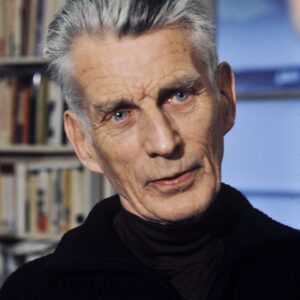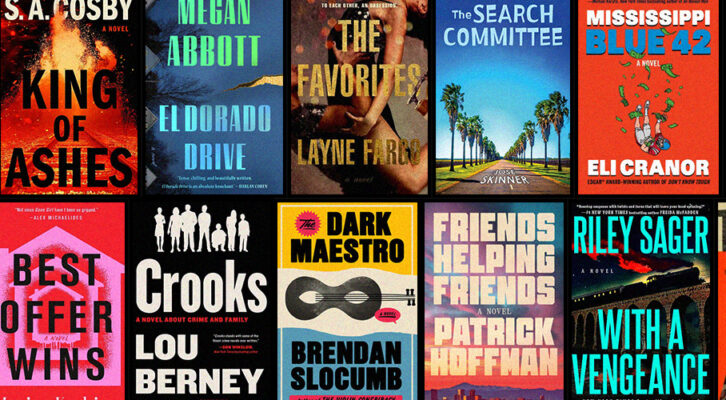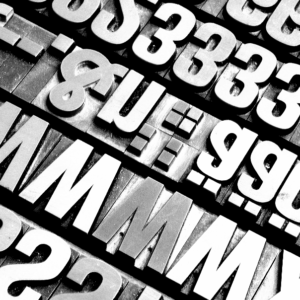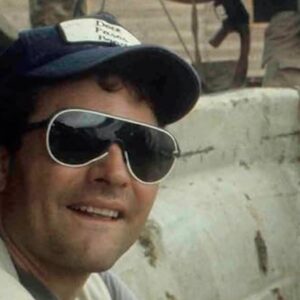
A Century of Reading: The 10 Books That Defined the 2000s
We've Got Stars Directing Our Fate
Some books are flashes in the pan, read for entertainment and then left on a bus seat for the next lucky person to pick up and enjoy, forgotten by most after their season has passed. Others stick around, are read and re-read, are taught and discussed. sometimes due to great artistry, sometimes due to luck, and sometimes because they manage to recognize and capture some element of the culture of the time.
In the moment, you often can’t tell which books are which. The Great Gatsby wasn’t a bestseller upon its release, but we now see it as emblematic of a certain American sensibility in the 1920s. Of course, hindsight can also distort the senses; the canon looms and obscures. Still, over the next weeks, we’ll be publishing a list a day, each one attempting to define a discrete decade, starting with the 1900s (as you’ve no doubt guessed by now) and counting down until we get to the (nearly complete) 2010s.
Though the books on these lists need not be American in origin, I am looking for books that evoke some aspect of American life, actual or intellectual, in each decade—a global lens would require a much longer list. And of course, varied and complex as it is, there’s no list that could truly define American life over ten or any number of years, so I do not make any claim on exhaustiveness. I’ve simply selected books that, if read together, would give a fair picture of the landscape of literary culture for that decade—both as it was and as it is remembered. Finally, two process notes: I’ve limited myself to one book for author over the entire 12-part list, so you may see certain works skipped over in favor of others, even if both are important (for instance, I ignored Dubliners in the 1910s so I could include Ulysses in the 1920s), and in the case of translated work, I’ll be using the date of the English translation, for obvious reasons.
For our eleventh installment, below you’ll find 10 books that defined the 2000s. (Head here for the 1910s, 20s, 30s, 40s, 50s, 60s, 70s, 80s, and 90s).
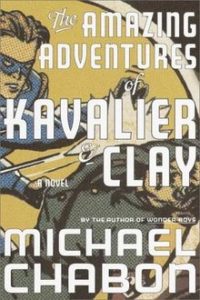 Michael Chabon, The Amazing Adventures of Kavalier & Clay (2000)
Michael Chabon, The Amazing Adventures of Kavalier & Clay (2000)
Chabon published his first novel, The Mysteries of Pittsburgh, in 1988, so he’d been around for a while by the time this beloved novel came out and blew everyone’s mind. Anecdotally, I’ve probably heard more people say this is their favorite novel than any other (though “everything by Murakami” (see below) is up there too) which certainly recommends it to this list—a book can’t define a decade if no one’s reading it. The Amazing Adventures of Kavalier & Clay was our introduction to Michael Chabon as a heavy hitter, and it’s still his magnum opus. The book was a bestseller, and won the Pulitzer Prize in 2001; the judges described it as “an exhilarating triumph of language and invention, a stunning novel in which the tragicomic adventures of a couple of boy geniuses reveal much about what happened to America in the middle of the 20th century. Like Phillip Roth’s American Pastoral or Don DeLillo’s Underworld, Michael Chabon’s The Amazing Adventures of Kavalier & Clay is a superb novel with epic sweep, spanning continents and eras, a masterwork by one of America’s finest writers.”
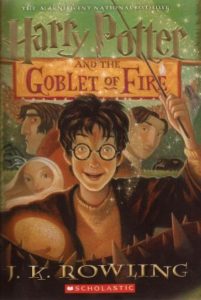 J. K. Rowling, Harry Potter and the Goblet of Fire (2000)
J. K. Rowling, Harry Potter and the Goblet of Fire (2000)
There’s no use tiptoeing around it: J. K. Rowling owned the 2000s. Sure, almost half of the Harry Potter books were published in the 90s—the first one came out in 1997—but 2000 was the year that the fandom (and the marketing teams) really kicked into high gear. Harry Potter and the Goblet of Fire was the first massive book in the series at 600+ pages (the initial three are normal lengths, but after the Goblet of Fire they would all be enormous), first book in the series to be published at the same time in the US and the UK, with a “record-setting combined first printing of more than five million copies.” The book was released for the first time on a Saturday so that children would be able to start reading it immediately, and it may have been this that allowed for the first midnight release parties, now a famous part of Pottermania. Enthusiasm for the series only increased throughout the decade, and in 2007, when the final book was published, it sold 11 million copies in 24 hours, making it the fastest-selling book in history. The influence of these books has been vast and varied. In 2007, TIME named Rowling a runner-up for Person of the Year. “Now translated into 65 languages, the books have joined a canon that stretches from Cinderella to Star Wars, giving people a way to discuss culture and commerce, politics and values,” TIME noted.
Princeton English professor William Gleason compares the series’ impact to the frenzy that surrounded Uncle Tom’s Cabin before the Civil War. “That book penetrated all levels of society,” he says. “It’s remarkable how similar the two moments are.” And he does not see this as a passing fad or some triumph of clever marketing. “They’ve spoken profoundly to enough readers that they will be read and reread by children and by adults for a long time,” he says. Feminist scholars write papers on Hermione’s road to self-determination. Law professors cite Dobby’s tale to teach contract law and civil rights. University of Tennessee law professor Benjamin Barton published “Harry Potter and the Half-Crazed Bureaucracy,” in the Michigan Law Review, which examined Rowling’s view of the legitimacy of government. His conclusion? “Rowling may do more for libertarianism than anyone since John Stuart Mill.” A Rutgers researcher named a rare rain-forest plant in Ecuador apparata after her verb apparate because it seemed to appear out of nowhere. French intellectuals debate whether the stories indoctrinate kids into free-market capitalism. In Turkey, the books were absorbed into the argument over Turkey’s cultural geography: Is Harry a symbol of Western imperialism or of lost Eastern traditions of mysticism and alchemy? A seventh-grade teacher in Pakistan in November invited her class to compare the country’s crisis to Harry Potter. The class immediately cast Pervez Musharraf as Voldemort and Benazir Bhutto as Bellatrix. “Potter is like a Rorschach blot,” says Georgetown government professor Daniel Nexon, “for people articulating concerns about globalization in their cultural setting. It’s incredibly significant that Potter even enters these debates.”
And that is on top of the impact, even her critics acknowledge, of inspiring a generation of obsessive readers unafraid of fat books and complex plots. “They’re easy to underestimate because of what I call the three Deathly Hallows for academics,” says James Thomas, a professor of English at Pepperdine University. “They couldn’t possibly be good because they’re too recent, they’re too popular, and they’re too juvenile.” But he argues that the books do more than entertain. “They’ve made millions of kids smarter, more sensitive, certainly more literate and probably more ethical and aware of hypocrisy and lust for power. They’ve made children better adults, I think. I don’t know of any books that have worked that kind of magic on so many millions of readers in so short a time in the history of publications.”
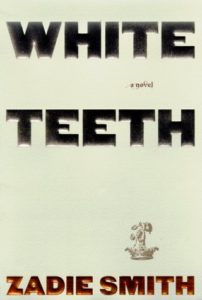 Zadie Smith, White Teeth (2000)
Zadie Smith, White Teeth (2000)
“This may be the first novel ever written that truly feels at home in our borderless, globalized, intermarried, post-colonial age, populated by “children with first and last names on a direct collision course,”” Lev Grossman wrote in TIME. “The overlapping fates of Smith’s characters seem to trace the new structures of 21st-century life and test their sturdiness as framework for peace and happiness. Both deeply Dickensian and playfully post-modern, White Teeth doesn’t quail before the rampantly ramifying novelistic complexities of a multicultural world. It revels in them.” Smith’s debut (published when she was just 24) was extremely well-received, decorated with multiple awards, and became a bestseller, but one famous person famously did not like it. If this is “hysterical realism,” Mr. Wood, I think I love hysterical realism.
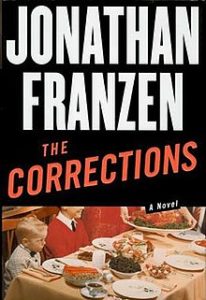 Jonathan Franzen, The Corrections (2001)
Jonathan Franzen, The Corrections (2001)
Love him or hate him, or hate to love him, or hated him until you read that profile and now sort of love him or at least hate that you hate him, J-Franz is a cultural pillar of the 2000s, a writer who deftly captured our collective American anxiety and thoroughly entertained us in the process, and um, who also fought with Oprah. I mean, there’s a reason TIME put him on its cover and declared him a Great American Novelist at the end of the decade (it’s because he wrote good chick lit and convinced us all it was high literature, one Literary Hub editor informed me). In fact, he was the only novelist to be on the cover of the magazine in that decade. The Corrections, Emily Eakin wrote in the New York Times, “is as clever as those of the brainy postmodernists he admires but infinitely more accessible.”
Like DeLillo and Gaddis, he dazzles the reader with trenchant riffs on contemporary life—everything from mood-enhancing pharmaceuticals to bisexuality to cruise-ship culture. But rather than relay his thoughts about the world through chilly rhetorical pyrotechnics or plots of mind-boggling complication, Franzen embeds them in the lives of affecting human characters.
It sounds suspiciously simple. But this, it turns out, is Franzen’s big idea: characters are what the contemporary social novel lacks—and what can save it from oblivion. And come to think of it, he has a case. In stuffing their books with formal gimmicks, postmodernists turned the social novel into an act of intellectual machismo and long ago showed characters the door. (Can you remember the name of a single person from Underworld, other than J. Edgar Hoover?) As male novelists abandoned psychological realism for oracular pronouncements, the job of creating memorable characters became women’s work—the forte of writers like Anne Tyler and Annie Proulx.
Sounds like that Literary Hub editor was right. In any event, The Corrections won the 2001 National Book Award and the James Tait Black Memorial Prize and was one of the biggest bestselling novels of the decade.
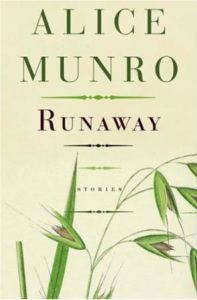 Alice Munro, Runaway (2004)
Alice Munro, Runaway (2004)
Honestly, I might have put Hateship, Friendship, Courtship, Loveship, Marriage (2001) here, or The View from Castle Rock (2006) or Too Much Happiness (2009)—it doesn’t much matter. They’re all equally genius. Count them all. Munro has had a long career—she published her first collection in 1968—so it’s also a little ridiculous to claim her for one decade or another, but let’s settle her here in the 2000s, during the boom of creative writing programs (and thus the boom of imitators), and the years leading up to her Nobel Prize for literature—which she won in 2013, with the Swedish Academy rightly cited her as a “master of the contemporary short story.”
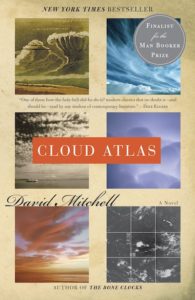 David Mitchell, Cloud Atlas (2004)
David Mitchell, Cloud Atlas (2004)
In the mid-2000s, this was the novel that everyone was pressing into one another’s hands, wide-eyed and whispering. Read this. I know—I was pressed and pressed in turn, and I wasn’t alone. A puzzlebox of a novel, it managed to be high brow and low brow, undeniably intellectual and deeply entertaining. The novel, Ted Gioia wrote, is “almost a textbook example” of how what he calls “conceptual fiction”
is enlivening contemporary fiction—all the more vital because it manages to be bold and experimental without destroying the key elements of narrative structure, character development and linguistic comprehensibility that earlier progressive movements often ignored at their own peril. The power of a book such as Cloud Atlas is amplified because its higher level complexities don’t require the ground floor level of the story be burnt, pillaged and destroyed. Instead of trying to keep up with the Pynchons and Gaddises, who only live in the penthouse, Mitchell occupies the whole building, even the boiler room and broom closet.
And in a 2010 profile of Mitchell, Wyatt Mason wrote:
Although the themes in Cloud Atlas weren’t new—the English novel has been exploring various degrees of human rapaciousness from Moll Flanders to Bleak House to Atonement— Mitchell had found a new form for their dramatization. Formal ingenuity, though, is just one feature of Mitchell’s excellence and, as Michael Chabon wrote in an e-mail message, not the most significant: “Mitchell has to catch you and hold you and keep you reading through what initially appear to be a series of more or less unrelated fragments. It is only his gift for making sentences, and his equally strong gift for framing characters, that enable him to play his marvelous game with narrative structure.”
In both structure and writing, this novel is unlike anything else—and I’d wager it will continue to influence contemporary literature for years to come.
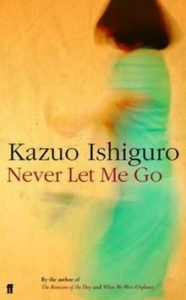 Kazuo Ishiguro, Never Let Me Go (2005)
Kazuo Ishiguro, Never Let Me Go (2005)
The most popular novel by our most recent Nobel Laureate in literature (though I’d argue The Remains of the Day is still his best) was much acclaimed and much purchased when it was published in 2005, though it seems critics are still arguing over whether it’s dystopian sci-fi or coming-of-age or a complex metaphor about race or horror or literary fiction of the highest caliber (the answer being, of course, all of these, and a hearty duh to you). Rachel Cusk reads the novel as being as much about art itself as it is about clones and humanity. “On one level Ishiguro seems to be saying that art is a con-trick, like religion; that it obscures from us the knowledge or awareness of our own mortality, knowledge that in the case of the Hailsham children is brutally withheld,” she wrote in The Guardian.
We believe that art is immortal, and so we represent creativity as an absolute good; but in making this representation to children, are we interfering with their right to know about and accept death? . . . Never Let Me Go, like the clones it portrays, has in the end something of a double nature, for it both attracts and annihilates. Or perhaps it is a book that requires two readers, the reader who can be blind to its ugly visage, and the reader who can see into its delicately conflicted soul. For those who perceive the latter, the novel’s bleak horror will leave a bruise on the mind, a fetter on the heart.
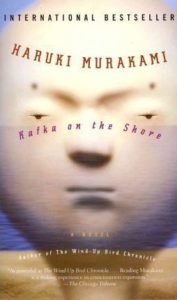 Haruki Murakami, Kafka on the Shore (first English translation, Philip Gabriel, 2005)
Haruki Murakami, Kafka on the Shore (first English translation, Philip Gabriel, 2005)
Murakami is another heavy-hitter with surprisingly wide appeal, considering the oddness of his work. Everyone has their own personal ranking system for Murakami’s works, which is exactly why he’s on this list. Everyone has an opinion, because everyone’s thought about him, at least a little bit. For me, this is the best of his novels in this decade (though overall I prefer The Wind-Up Bird Chronicle (1997), and though no one asked, you’re still reading this space, so I might as well inform you that Norwegian Wood is bad trash).
“When the English translation of Haruki Murakami’s bestselling A Wind-Up Bird Chronicle transformed one of Japan’s best-kept literary secrets into the world’s best-known living Japanese novelist, this reviewer’s acquaintances neatly subdivided themselves into three groups: besotted devotees (one British friend went so far as to name his newborn son “Haruki”); critical admirers; and people who came out in a nasty rash,” David Mitchell wrote in The Guardian. He doesn’t count this one as a masterpiece (he cites A Wind-Up Bird Chronicle, as he too has his ranking system, and like me, he is correct) but revels in Murakami’s seductive prose and “trademark kookinesses,” and notes that “Murakami’s protagonists radiate a likeable humanity at odds with many of the “Asia Extreme” Japanese writers currently being translated into English, including Ryu (no relative) Murakami, Natsuo Kirino and Ring-master Koji Suzuki. Murakami writes Cert 18 scenes with aplomb when his plot demands it, but these never feel gratuitous or onanistic.”
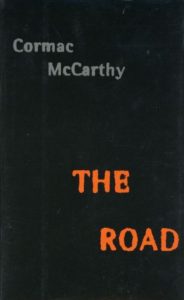 Cormac McCarthy, The Road (2006)
Cormac McCarthy, The Road (2006)
Another popular, bestselling Pulitzer Prize winner (I wonder if those things have any connection to one another), The Road may not be McCarthy’s best work (that is certainly Blood Meridian) but it is certainly his most read. And, despite its near-psychotic inattention to grammar, it’s still a fantastic achievement. “What emerges most powerfully as one reads The Road is not a prognosticatory or satirical warning about the future, or a timeless parable of a father’s devotion to his son, or yet another McCarthyesque examination of the violent underpinnings of all social intercourse and the indifference of the cosmic jaw to the bloody morsel of humanity,” wrote Michael Chabon in The New York Review of Books.
The Road is not a record of fatherly fidelity; it is a testament to the abyss of a parent’s greatest fears. The fear of leaving your child alone, of dying before your child has reached adulthood and learned to work the mechanisms and face the dangers of the world, or found a new partner to face them with. The fear of one day being obliged for your child’s own good, for his peace and comfort, to do violence to him or even end his life. And, above all, the fear of knowing—as every parent fears—that you have left your children a world more damaged, more poisoned, more base and violent and cheerless and toxic, more doomed, than the one you inherited. It is in the audacity and single-mindedness with which The Road extends the metaphor of a father’s guilt and heartbreak over abandoning his son to shift for himself in a ruined, friendless world that The Road finds its great power to move and horrify the reader.
It is pretty bleak, especially for a bestseller. “The Road has found a surprisingly enthusiastic audience given its foreboding and, at times, gruesome sensibility,” wrote Ted Gioia. “It won the Pulitzer, made it into Oprah’s book club, and was placed by Entertainment Weekly at the top of a list of the best books of the last 25 years. Entertainment Weekly? If this is entertainment, I think I will trade in my big screen TV for a long stint in solitary confinement. This gripping novel will force readers outside their comfort zones, and ultimately succeeds without making even the smallest concession to the formulas of escapist fiction.” A feat in itself.
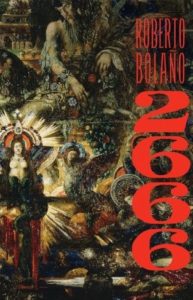 Roberto Bolaño, 2666 (first English translation, Natasha Wimmer, 2008)
Roberto Bolaño, 2666 (first English translation, Natasha Wimmer, 2008)
There’s a fair argument that Bolaño’s final, posthumously published novel is not only one of the defining books of the decade, but of the century. “2666 is as consummate a performance as any 900-page novel dare hope to be,” Jonathan Lethem wrote in the New York Times Book Review.
Bolaño won the race to the finish line in writing what he plainly intended, in his self-interrogating way, as a master statement. Indeed, he produced not only a supreme capstone to his own vaulting ambition, but a landmark in what’s possible for the novel as a form in our increasingly, and terrifyingly, post-national world. The Savage Detectives looks positively hermetic beside it. . . . A novel like 2666 is its own preserving machine, delivering itself into our hearts, sentence by questing, unassuming sentence; it also becomes a preserving machine for the lives its words fall upon like a forgiving rain, fictional characters and the secret selves hidden behind and enshrined within them: hapless academic critics and a hapless Mexican boxer, the unavenged bodies deposited in shallow graves. By writing across the grain of his doubts about what literature can do, how much it can discover or dare pronounce the names of our world’s disasters, Bolaño has proven it can do anything, and for an instant, at least, given a name to the unnamable.
See also:
Dave Eggers, A Heartbreaking Work of Staggering Genius (2000), Helen DeWitt, The Last Samurai (2000), George Saunders, Pastoralia (2000), Marjane Satrapi, Persepolis (2000), David Sedaris, Me Talk Pretty One Day (2000), Mark Z. Danielewski, House of Leaves (2000), Chris Ware, Jimmy Corrigan, the Smartest Kid on Earth (2000), Barbara Ehrenreich, Nickel and Dimed (2001), Richard Russo, Empire Falls (2001), Yann Martel, The Life of Pi (2001), Percival Everett, Erasure (2001), Neil Gaiman, American Gods (2001), Ian McEwan, Atonement (2001), Gary Indiana, Do Everything in the Dark (2001), Dennis Lehane, Mystic River (2001), Ann Patchett, Bel Canto (2001), Jonathan Safran Foer, Everything is Illuminated (2002), César Chávez, The Words of César Chávez (2002), Jeffrey Eugenides, Middlesex (2002), W. G. Sebald, Austerlitz (first English translation, 2002), Alice Sebold, The Lovely Bones (2002), Sarah Waters, Fingersmith (2002), Edward P. Jones, The Known World (2003), Mitch Albom, The Five People You Meet in Heaven (2003), Mark Haddon, The Curious Incident of the Dog in the Night-Time (2003), Audrey Niffenegger, The Time Traveler’s Wife (2003), Erik Larson, The Devil in the White City (2003), Khaled Hosseini, The Kite Runner (2003), Azar Nafisi, Reading Lolita in Tehran (2003), Lynne Truss, Eats, Shoots & Leaves: The Zero Tolerance Approach to Punctuation (2003), Margaret Atwood, Oryx and Crake (2003), Dan Brown, The Da Vinci Code (2003), Zoë Heller, Notes on a Scandal (2003), Per Petterson, Out Stealing Horses (2003), Tobias Wolff, Old School (2003), Susanna Clarke, Jonathan Strange & Mr. Norrell (2004), Carlos Ruiz Zafón, The Shadow of the Wind (first English translation, 2004), Alan Hollinghurst, The Line of Beauty (2004), Carl Hiaasen, Skinny Dip (2004), Marilynne Robinson, Gilead (2004), Philip Roth, The Plot Against America (2004), Joan Didion, The Year of Magical Thinking (2005), Kelly Link, Magic for Beginners (2005), Elizabeth Kostova, The Historian (2005), Zadie Smith, On Beauty (2005), Stephenie Meyer, Twilight (2005), John Green, Looking for Alaska (2005), Markus Zusak, The Book Thief (2005), Chris Adrian, The Children’s Hospital (2006), Deborah Eisenberg, Twilight of the Superheroes (2006), John Boyne, The Boy in the Striped Pyjamas (2006), Gene Luen Yang, American Born Chinese (2006), Alison Bechdel, Fun Home (2006), Roberto Bolaño, The Savage Detectives (2007), Patrick Rothfuss, The Name of the Wind (2007), Chimamanda Ngozi Adichie, Half of a Yellow Sun (2007), Tom McCarthy, Remainder (2007), André Aciman, Call Me By Your Name (2007), Sherman Alexie, The Absolutely True Diary of a Part-Time Indian (2007), Mohsin Hamid, The Reluctant Fundamentalist (2007), Junot Díaz, The Brief Wondrous Life of Oscar Wao (2007), Aravind Adiga, The White Tiger (2008), Suzanne Collins, The Hunger Games (2008), Stieg Larsson, The Girl with the Dragon Tattoo (first English translation, 2008), Keith Gessen, All the Sad Young Literary Men (2008), Steven Millhauser, Dangerous Laughter (2008), Joseph O’Neill, Netherland (2008), Richard Price, Lush Life (2008), John Updike, The Widows of Eastwick (2008), Curtis Sittenfeld, Prep (2005), Hilary Mantel, Wolf Hall (2009)
Emily Temple
Emily Temple is the managing editor at Lit Hub. Her first novel, The Lightness, was published by William Morrow/HarperCollins in June 2020. You can buy it here.









